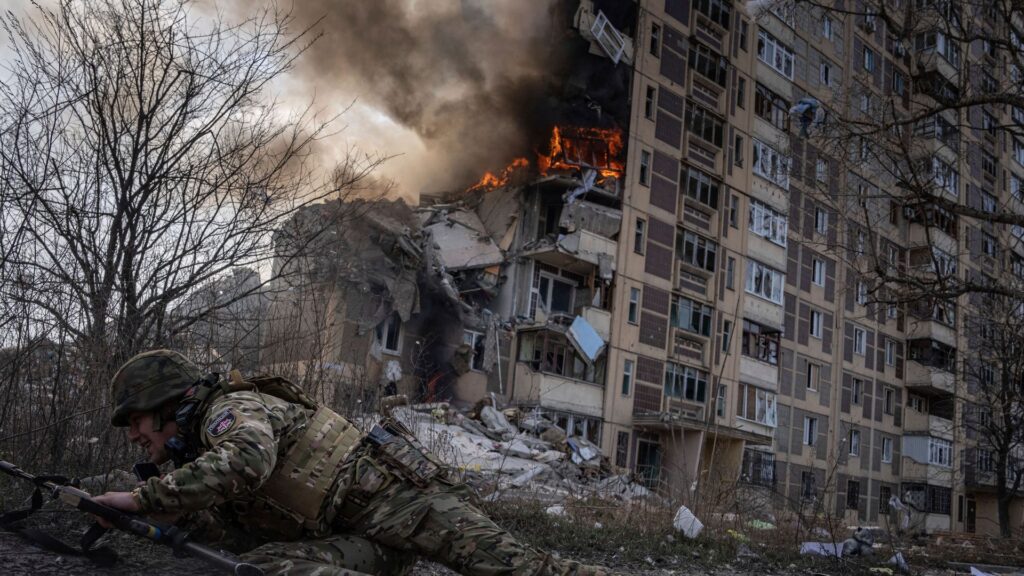President Donald Trump announced Saturday, May 17, via his social media platform, Truth Social, that he will speak to Russian President Vladimir Putin by telephone at 10 a.m. Monday, May 19, to discuss “stopping the ‘bloodbath’” between Russia and Ukraine. Trump added that he will then speak with Ukrainian President Volodymyr Zelenskyy, and that together, they will speak to “various members of NATO.”
What came of Moscow and Kyiv’s first direct talks?
On Friday, May 16, Moscow and Kyiv held their most direct talks since Russia launched its full-scale invasion of Ukraine in 2022. The two sides reportedly spoke for less than two hours and ended by agreeing to a large prisoner swap. Although he proposed the idea for the talks, Putin did not participate.
Following the talks, Zelenskyy spoke to Trump by phone alongside French President Emmanuel Macron, German Chancellor Friedrich Merz, British Prime Minister Keir Starmer and Polish Prime Minister Donald Tusk. In a post on X, Zelenskyy wrote, “Ukraine is ready to take the fastest possible steps to bring real peace, and it is important that the world holds a strong stance.” He added, “Our position — if the Russians reject a full and unconditional ceasefire and an end to killings, tough sanctions must follow. Pressure on Russia must be maintained until Russia is ready to end the war.”
Rubio pitches Vatican as a neutral playing field
Trump’s announcement comes shortly after U.S. Secretary of State Marco Rubio pitched the idea of using the Vatican as a neutral playing field for hosting negotiations between Ukraine and Russia. While he stopped short of calling the Vatican a potential “peace broker,” Rubio said Saturday he thinks “it’s a place that both sides would be comfortable going.”
Rubio was in Vatican City to speak with Cardinal Matteo Zuppi, the church’s Ukraine liaison. The two were set to discuss the status of Ukraine-Russia negotiations following Friday’s face-to-face meeting, as well as “the path forward.”
“So we’ll talk about all of that and obviously always grateful to the Vatican for their willingness to play this constructive and positive role,” Rubio said.
Prior to Pope Francis’ death on April 21, the Vatican had offered on several occasions to act as a mediator in the war. However, that role never came to fruition. Then, on May 11, during his first Sunday Mass as pope, Leo XIV again took up the Ukrainian cause. “I carry in my heart the suffering of the beloved Ukrainian people,” he said, urging that “every effort be made to reach a true, just, and lasting peace as soon as possible.”
Is a ceasefire possible?
While Russia and Ukraine did agree to swap 1,000 prisoners of war each during their first face-to-face meeting Friday, they were unable to bridge some outstanding divides, including a call for an unconditional temporary ceasefire –– something that Ukraine and its Western allies have routinely called for but that the Kremlin has routinely denied.
After the talks, Ukrainian Foreign Ministry spokesman Heorhii Tykhii said that Kyiv was yet to receive a “Russian ‘yes’ on this basic point.” Tykhii added, “If you want to have serious negotiations, you have to have guns silenced.”
Meanwhile, Russian delegation head Vladimir Medinsky, who participated in the failed 2022 peace negotiations at the start of the war, said he was “satisfied with the outcome” of the talks, according to the Associated Press.
Even though Russia has historically opposed any sort of ceasefire, Trump said Saturday that “a ceasefire will take place, and this very violent war, a war that should have never happened, will end.”


